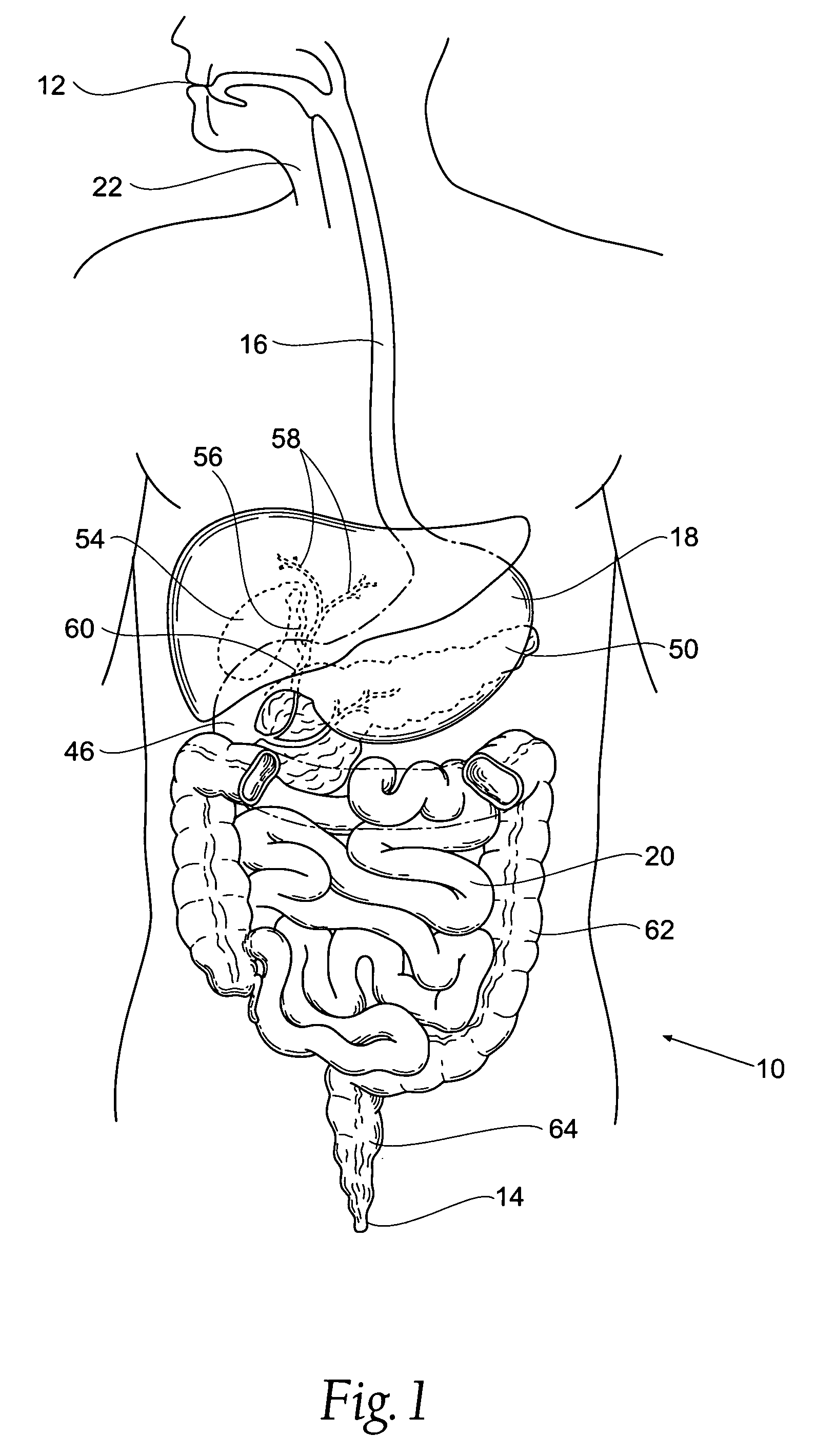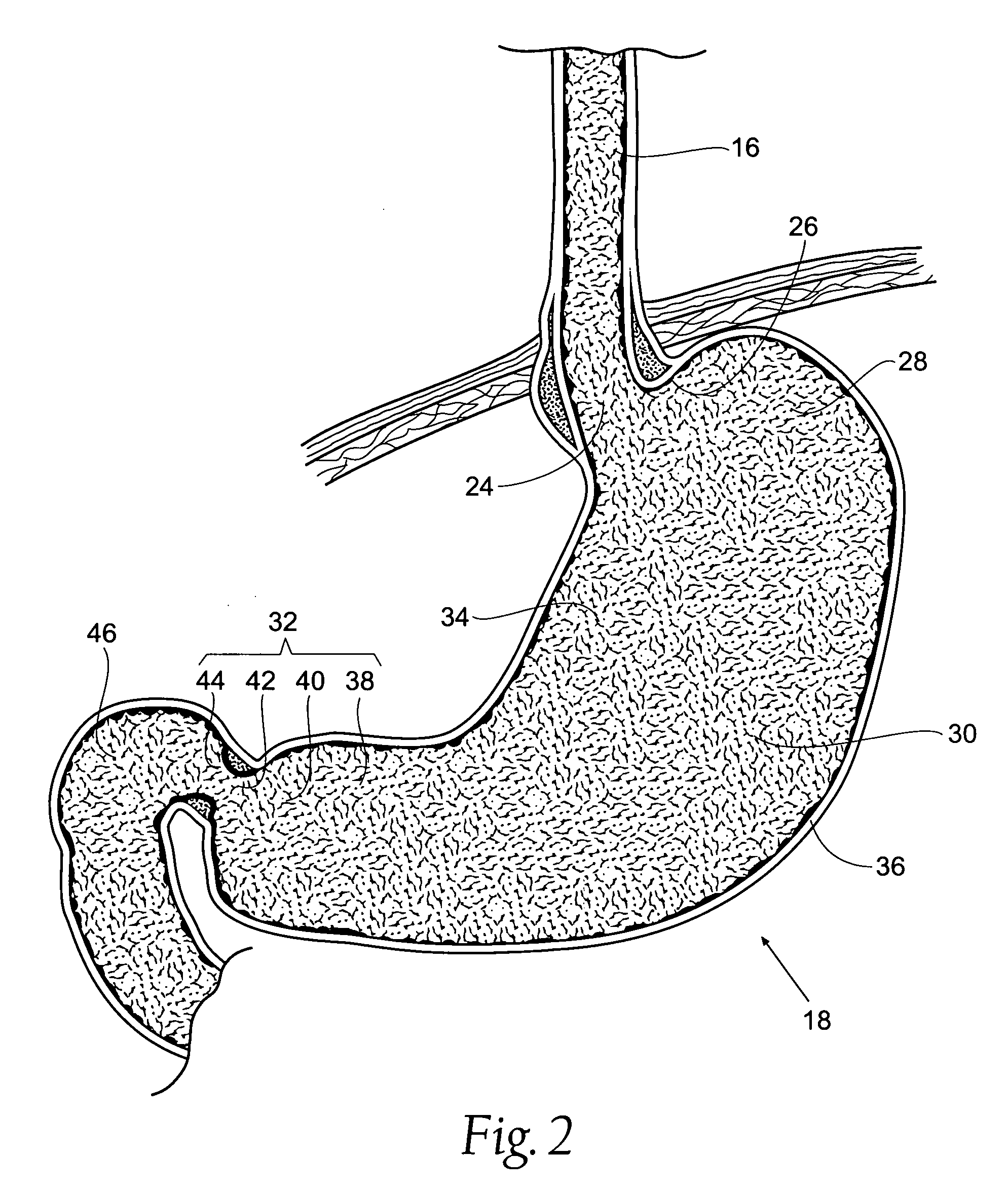Systems and methods for treating obesity and other gastrointestinal conditions
a system and gastrointestinal disease technology, applied in medical devices, surgical instruments for heating, surgical instruments for irrigation of substances, etc., can solve the problems of obesity individuals being discriminated in the job market, more calories, and obesity in school, so as to inhibit the further relaxation and stretching of stomach muscles, restrict the capacity of the stomach, and inhibit the effect of increasing the volume of the stomach during eating
- Summary
- Abstract
- Description
- Claims
- Application Information
AI Technical Summary
Benefits of technology
Problems solved by technology
Method used
Image
Examples
Embodiment Construction
[0058]Although the disclosure hereof is detailed and exact to enable those skilled in the art to practice the invention, the physical embodiments herein disclosed merely exemplify the invention that may be embodied in other specific structure. While the preferred embodiment has been described, the details may be changed without departing from the invention, which is defined by the claims.
I. Anatomy of the Digestive System
[0059]FIGS. 1 and 2 detail the human digestive system 10. The digestive system 10 consists of a series of hollow organs joined in a long, twisting tube from the mouth 12 to the anus 14. Digestion begins in the mouth 12, where food is chewed and swallowed. In order for food and drink to be changed into nourishment that the body can use, the food must be changed into smaller molecules before being absorbed into the bloodstream and transported to cells in the body. Once food is broken down into small parts, the body can use the parts to build new cells and provide ener...
PUM
| Property | Measurement | Unit |
|---|---|---|
| time | aaaaa | aaaaa |
| frequency | aaaaa | aaaaa |
| depths | aaaaa | aaaaa |
Abstract
Description
Claims
Application Information
 Login to View More
Login to View More - R&D
- Intellectual Property
- Life Sciences
- Materials
- Tech Scout
- Unparalleled Data Quality
- Higher Quality Content
- 60% Fewer Hallucinations
Browse by: Latest US Patents, China's latest patents, Technical Efficacy Thesaurus, Application Domain, Technology Topic, Popular Technical Reports.
© 2025 PatSnap. All rights reserved.Legal|Privacy policy|Modern Slavery Act Transparency Statement|Sitemap|About US| Contact US: help@patsnap.com



